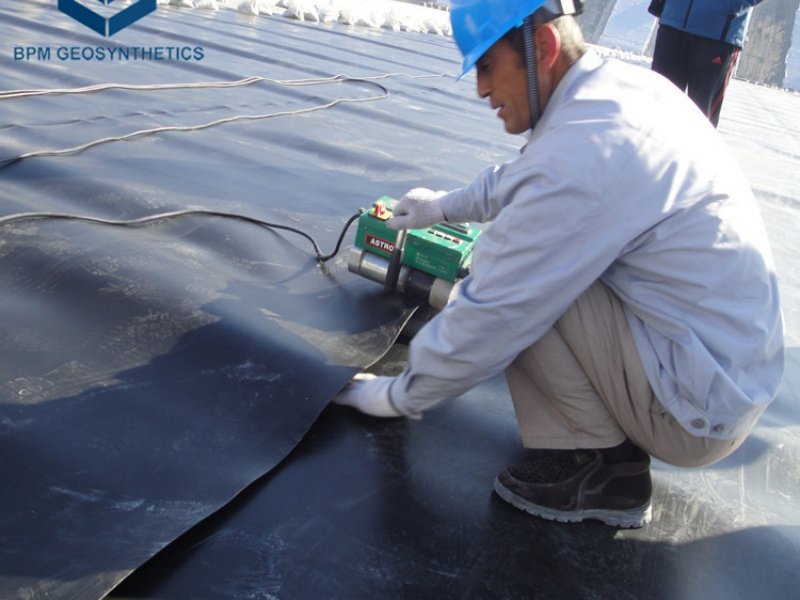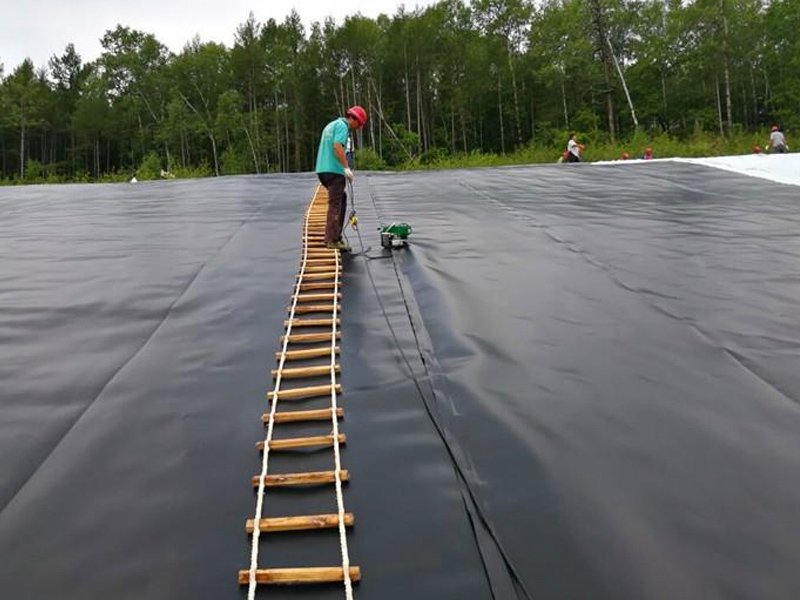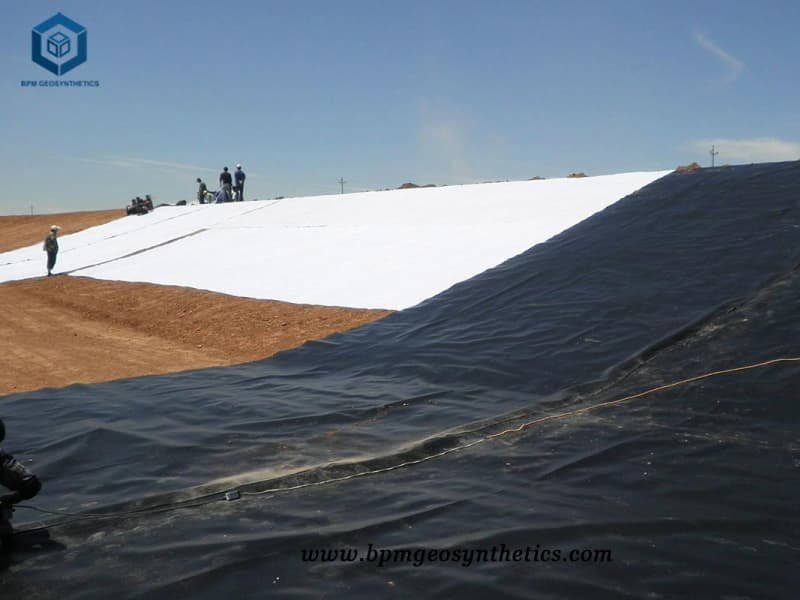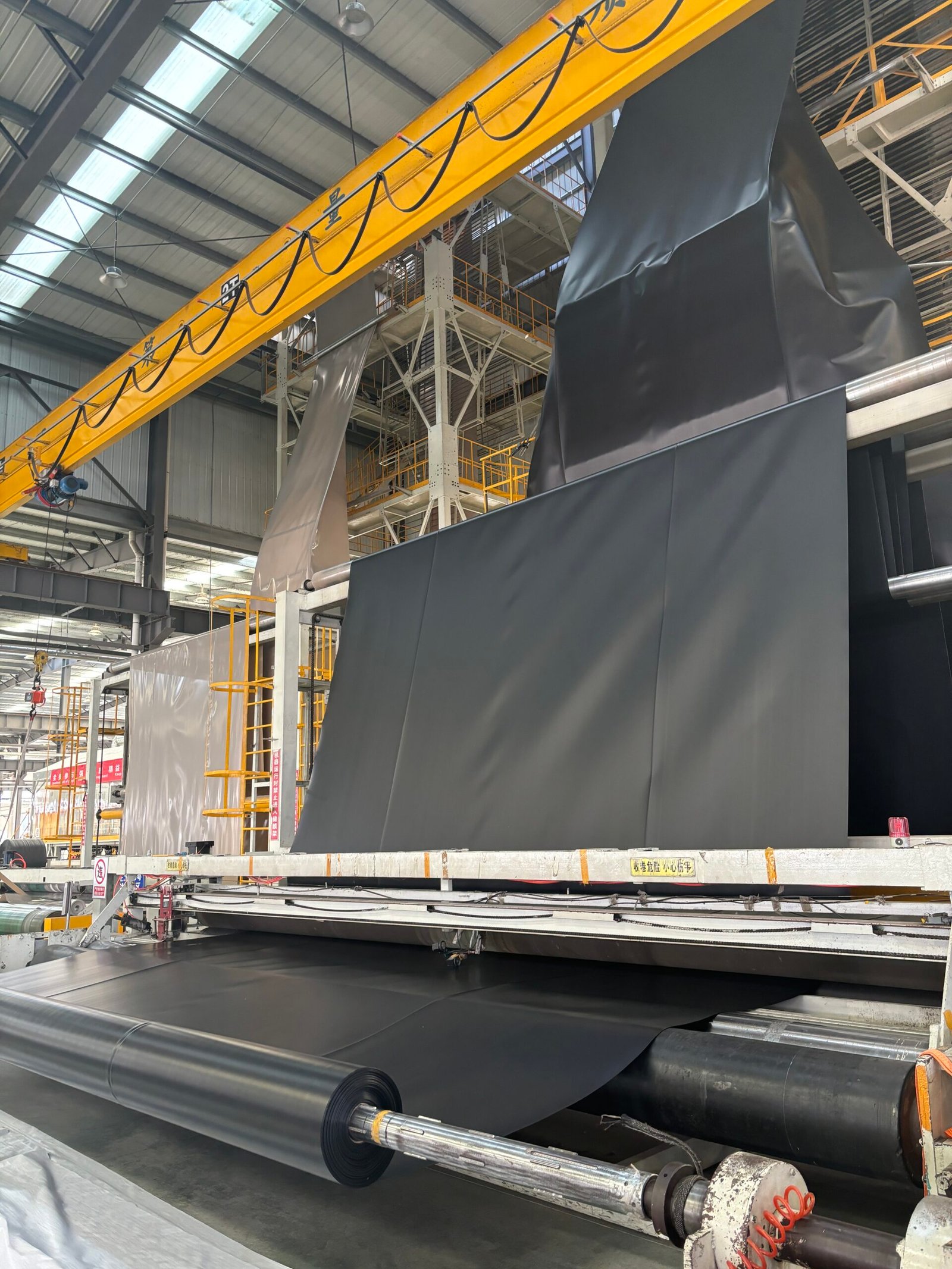Geomembrane welding machine plays an indispensable role in geomembrane installation. We usually see various welding machines where geomembranes are installed. Next, let us have an in-depth understanding of welding machines through the types of welding machines, as well as the welding machine price and the welding process and detection results.
1. What is the welding machine?
Geomembrane welding machine is a special machine used to connect geomembranes through thermal fusion. Welding machines ensure strong and durable welds, which are critical for applications such as landfill liners, pond liners and water management, mining and civil engineering projects. These machines provide a reliable, efficient method of forming strong and durable joints, ensuring the integrity of geomembrane installations.
2.What types of welding machines are there?
2.1 Welding Machine Price- Hot Wedge Welding Machines
These machines use a heated wedge to melt the HDPE geomembrane surfaces,Fusion welding consists of placing a self propelled hot wedge or hot air welder between two overlapped panel edges.The welders heat and melt the surface of the geomembrane and then compress the material between two rollers where the combination of heat and pressure creates a fusion weld.Hot wedge welding machines are the most common type of welding machine used in geomembrane installation.
The geomembrane thickness welded by the geomembrane welding machine is different, so the appropriate geomembrane welding machine price model is also different.The Hot Wedge Welding Machine Price is approximately $600 to $1100.

2.2 Welding Machine Price- Extrusion Welding Machines
Extrusion welding machines are often the best partners with welding rods.These machines use a heated extruder to melt the HDPE geomembrane surfaces, and then the molten welding rod is extruded to form a welded joint.The melted welding rod tightly welds the joints of the geomembrane together.
Extrusion fillet welding consists of extruding a bead of molten welding rod along the edge of a panel lapped on top of another panel. The molten welding rod causes the melting of each geomembrane, which results in a homogeneous bonding of the geomembranes. The welding rod used for welding must be compatible with the geomembrane liner materia.
Extrusion welding machine price have different, because need to match welding rod thickness is different.Extrusion welding machine Price is approximately $1000 to $1300.
2.3 Welding Machine Price – Hot Air Welding Machines
Hot air welding machines use hot air flow to heat and melt the surface of the geomembrane. The heated surfaces are then pressed together to create a strong and even seam.
This method is highly versatile and suitable for welding projects in small projects. It has slower welding speed and larger workload than hot wedge welding machine. But the operation is simple and light. However, it is the cheapest among all the welding machine price.Hot air welding machine Price is approximately $100 to $150.
3. How does a welding machine work?
3.1 Preparation before welding
All welding personnel must have received special training on welding machines and be proficient in welding methods before welding. At the same time, welders are also required to read the instruction manual of the welding machine brand. Confirm that all procedures of the welding process comply with specifications.
3.1.1 When choosing an HDPE geomembrane welding machine, consider the following factors:
(1)Welding technology: Choose a machine with the right welding technology for your application.
(2)Welding speed: Consider required welding speed and productivity requirements.
(3)Weld quality: Look for machines that ensure consistent and high-quality welds.
(4)Portability: If you need to work on different job sites, consider choosing a portable machine that is easy to carry and transport.Choose a welding machine that is user-friendly and easy to operate. Portability is also important, especially for projects that require mobility and flexibility.
(5)Before setting up your machine, read the manufacturer’s instructions and safety guidelines.Make sure the machine is placed on a stable and flat surface.Connect the machine to a reliable power source and check the voltage requirements.Depending on the welding technique, install the appropriate welding nozzle or wedge tool.
3.2. Testing during welding
3.2.1 Surface preparation
Properly prepare the geomembrane surface before welding by cleaning and removing any contaminants or debris. This ensures optimal bonding between the geomembrane sheets.
3.2.2 Temperature and speed control
Maintain precise temperature and speed control during welding. Follow the manufacturer’s recommendations and adjust settings for the specific geomembrane material being used.
3.2.3 Correct welding techniques
Master the correct welding techniques for your chosen welder. This includes maintaining a consistent welding speed, applying adequate pressure, and ensuring proper overlap of the geomembrane sheets. Overlap the edges of the geomembrane by at least four inches, or as specified by the welder manufacturer. Extrusion fillet welds require a six-inch overlap.

4. How to test the welding quality effect?
After completing the welding process, inspect the seam visually for any irregularities, voids, or leaks.Conduct non-destructive testing methods, such as air or vacuum testing, to verify the integrity of the welded seam.Repair or redo any defective seams to ensure the desired quality and performance.
4.1 Destructive Seam Test
Test seams shall be performed using pieces of liner long enough for the welder.temperatures to stabilize. Follow the welder manufacturer’s recommendations. At a minimum, fusion welded seam samples will be 10 feet long and extrusion welded seams 3 feet long. Cut test specimens from the end of the test seams. Test seams must be made under the same conditions as the actual sealing process. Unless otherwise required, only seam peel tests need to be done in the field. For unreinforced geomembrane seam peel should be tested in accordance with ASTM D 6392 using the 90º T-peel method. Test five samples one inch wide, pulled at a rate of 20 inches/minute using a field tensiometer.
4.2 Vacuum test
Vacuum testing is a commonly used non-destructive testing method to check the quality and tightness of geomembrane welds.
4.3 Air pressure test
Air pressure testing of geomembrane welds is a common method used to check the quality and tightness of the weld. To conduct the air pressure needle test for geomembrane welding, first seal the welding area, connect the air source and the air pressure needle, gradually apply air pressure to the welding area, and observe the air pressure needle reading. A stable and non-dropping reading indicates that the welding area is well sealed. If bubbles appear or the reading drops, there may be air leakage in the weld or sealing area. Evaluate weld quality and tightness based on test results, repair and retest if necessary.

Summary:
Geomembrane welding machines are important tools for achieving strong and durable joints in geomembrane installation, especially in the field of welding and cutting equipment. This guide provides valuable insights into the field of geomembrane welding machine price by understanding its definition, different types of machine price, welding operations and post-weld quality testing. You can ensure the success of your geomembrane welding project. Prioritize safety, quality and proper maintenance to maximize the performance and life of your welder.



